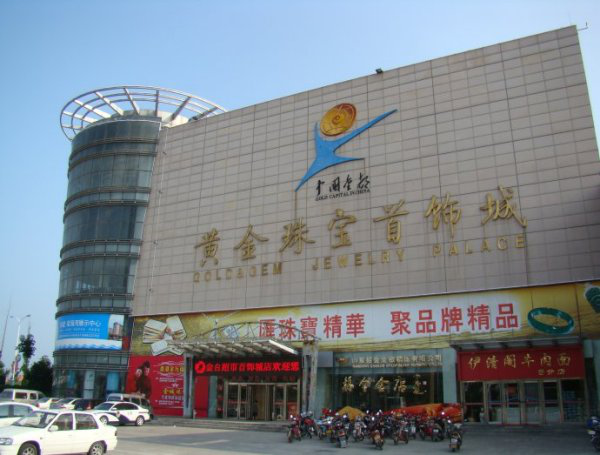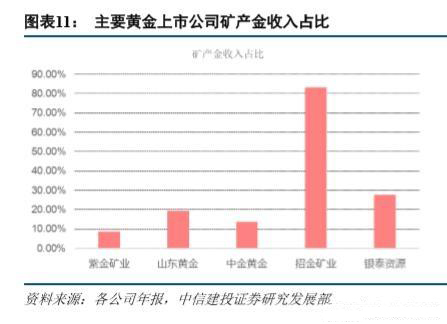The reserves of gold resources are 8974.74 tons. Mainly distributed in Shandong, Henan, Jiangxi, Yunnan, Fujian, Inner Mongolia, Shaanxi, Hunan, Gansu, Anhui. These ten provinces accounted for 82.94% of the country’s gold production.
Shandong is China’s largest gold province. According to the statistics of the total amount of resources held in the country at the end of 2010, Shandong has 11 mineral resources ranked first in the country, including gold mines. Among the four major gold groups in China, two (Shandong Gold and Zhaojin Mining) are all based in Shandong.
Shandong’s gold resources are mainly concentrated in Yantai Zhaoyuan. Laizhou-Zhaoyuan area is the world’s third-largest gold metallogenic belt, and an extra-large gold-rich region rare in the world.

Shandong gold resources are concentrated in Laizhou-Zhaoyuan area
In 2017, a new gold mine in China was discovered in Laizhou-Zhaoyuan area.
This world-class giant single gold deposit is expected to submit more than 550 tons of gold resources after the end of exploration, with a potential economic value of more than 150 billion yuan. It is the largest single gold deposit in China and has a full load. It can be mined for at least 40 years.
Zhao Yuan has such a thick family, and it is no surprise that he has become the “Chinese Golden Capital”.
In addition to “there are mines at home”, Zhaoyuan’s alchemy is another important reason.
In 1978, Zhaoyuan’s gold production was only 117,500, which became 300,000 in 1995, and in 2017 it reached 1.072 million, which was a tenfold increase. Behind the sharp increase in production is the rapid development of smelting technology.
“Growing money with gold” is Zhaoyuan’s method.
Zhaoyuan from gold every yearFrom the profit of the industry, 100 million will be spent to recruit scientific and technological talents to do high-tech development and high-tech project construction in the gold industry. Alchemy has improved, and Zhaoyuan has achieved a breakthrough in gold refining technology.
The single beneficiation recovery rate of beneficiation reached more than 96%. Not only can the gold mine mined by the company be “eat and squeezed”, but also because of the high smelting technology, the gold mines transported from other places can be treated together. Too.
The whole industry chain from gold rush to gold sales is the third reason for Zhaoyuan to enlarge its gold industry.
With the breakthrough in mining and smelting technology, Zhaoyuan has set his sights on the deeper processing and sales of more lucrative gold, continuously extending the length of the gold industry chain.
In the deep processing of gold, Zhaojin Group adopts Swedish refining technology and technology. The purity of gold refining reaches 999.99‰. From mold to design, packaging and testing, it can process 100 tons of gold bars and gold medals every year.
Zhaojin Group built its own “Golden Gold Jewelry City”, making Zhaoyuan an important gold and silver jewelry distribution center in northern China.

Jindu Gold Jewelry City
It’s not over to complete wholesale by yourself. Zhaojin Group has more than 400 “zhaojinyinlou”, wholesale and retail gold and silver jewelry.
Eating by the mountains and eating by the water. Keeping the gold naturally eats the gold.
Zhaoyuan started the Golden Festival with its gold signboard of “China Golden Capital”. In the 13th Golden Festival in 2019 alone, Zhaoyuan signed 18 projects with a total investment of 5.1 billion, and sold more than 6 million gold and silver jewelry online.
3. What to do if the gold mining is completed
Like other mining, “There is gold underground, and mines are prosperous,” but resources are not always inexhaustible. Gold mines are the same as any mine, and it is difficult to get rid of the rule of “from youth to old age.”
The lesson of the car is in front of Zhaoyuan, and there are more than one.
Like Hegang, famous for its “50,000 yuan to buy a house” two years ago, it was once one of the “four major coal capitals” in China. A hundred years ago it was a “model” of China’s industrialized city; the first in New China The oil city of Yumen City had an area of 13,500 square kilometers in its heyday. However, in 2003, Yumen’s municipal party committee and government reluctantly moved to Yumen Town. The old Yumen city was abandoned after the resources were exhausted.

Because of the exhaustion of resources, the old city of Yumen has now been empty
Similar places include Daye in Hubei and Fuxin in Liaoning…They all have a name called “Resource-Depleted City”.
Rising and declining because of resources, just like the human life cycle, many of China’s resource-based cities have entered the twilight years.
In the National Sustainable Development Plan for Resource-Based Cities (2013-2020), the country’s 262 resource-based cities are divided into four types: growth, mature, decline, and regeneration. Among these 262 Among the cities, 69 have been identified as typical resource-depleted cities, involving a total population of 154 million.

Zhaojin Group has the highest proportion of mineral gold revenues. On the one hand, it reflects the richness of Zhaoyuan’s gold minerals, on the other hand, it also reflects that its technological content and product added value are not high.
If a resource-based city does not have its own “back hand”, it will most likely fall into a gray trap after exhaustion. Accompanied by various chaotic phenomena such as bad ecological environment and chaotic social order.
Although Zhaoyuan still has a gold mine that can be dug for 40 years, it is already a mature resource-based city, and the “negative effect” of resource exhaustion has gradually emerged. Economic, social, ecological and other problems exist to varying degrees.
What about Zhaoyuan?
A good example is the neighboring city of Longkou. Don’t look at Zhaoyuan’s production of gold, but Longkou, which can be made of aluminum, has always been holding Zhaoyuan’s economy.
That is because Longkou has always been oriented towards building a technology-intensive city. Take Nanshan Aluminum of Longkou, for example, its customers are Boeing, Airbus, Tesla, FAW-Volkswagen, and it has also produced Mongolian C919 aircraft. The output value of leather and structural parts and high-end aluminum materials is nearly 100 billion yuan.

In the ranking of the top 100 counties in the country, although Zhaoyuan is a large gold-producing household, it has long been ranked behind “neighbor” Longkou City
This is the gap between resource-intensive and technology-intensive cities.
Fortunately, Zhaoyuan has begun to realize this problem and is also increasing his gold content in technology. Zhaoyuan takes advantage of its gold industry and focuses on the research, development and innovation of new technologies in electronic materials.
The high-end flexible copper foil developed and produced by Zhaoyuan Enterprise has realized the localization of 5G application, and has become the only domestic company to supply Huawei in batches.
In addition, Zhaoyuan’s enterprises have also begun to actively go abroad through the “Belt and Road” initiative to create Zhaoyuan’s brand.
In the history, the fans who have made far-off production are exported through Longkou, and evenYu Longkou fans have become a resounding brand, but no one knows that its origin is actually in Zhaoyuan. This “historical grudge” also reminds Zhaoyuan to pay more attention to building its own brand.
In fact, in addition to gold, Zhaoyuan also exports pea protein, which ranks first in the international market, as well as the famous red Fuji apple, and many economic growth points that are covered by the gold industry.
Jinshan will dig one day. The core of green development is not the end management, but the front-end green design. Not only do you have to put your eyes in front of you, but you also have to take it longer.
Hopefully, in the future, there will be both Jinshan Yinshan and green mountains.